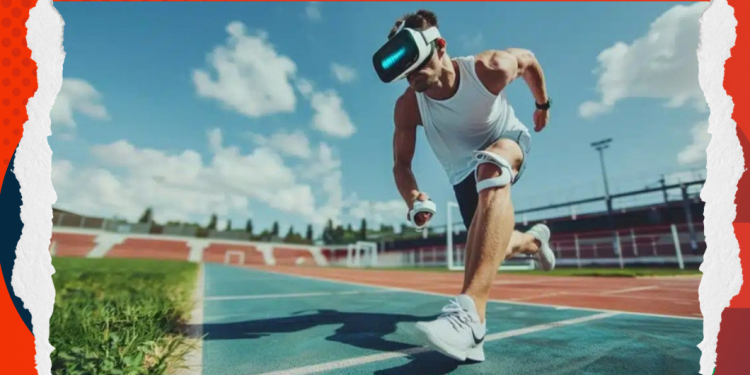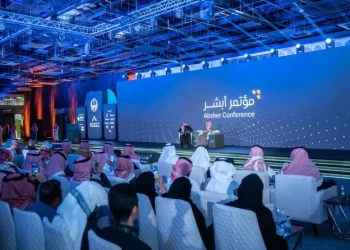Athletes across the Middle East are using advanced wearable technology to gain a competitive advantage, with data showing remarkable improvements in training efficiency and injury prevention.
Smart wearables have become essential tools for Middle Eastern athletes who want to push their performance to new heights. These devices track everything from heart rate patterns to movement mechanics, providing coaches and athletes with precise data to optimize training programs.
The Middle East and Africa smart sports wearables market reached $98.9 million in 2023, and experts expect it to grow at 15% annually through 2030. This growth reflects how seriously athletes and sports organizations in the region take performance technology.
Real-Time Data Powers Training Decisions
Modern wearables do far more than count steps. They monitor oxygen levels, track sleep quality, measure muscle strain, and analyze recovery patterns. Athletes receive instant feedback during training sessions, allowing coaches to make immediate adjustments.
GPS tracking shows exactly how fast athletes move and how much distance they cover. Heart rate monitors reveal when athletes push too hard or need more intensity. Sleep trackers help optimize recovery periods between training sessions.
Dubai leads this technology adoption in the region. The city recently launched smart wearable programs for UAE athletes, combining artificial intelligence with performance monitoring. These systems use advanced sensors and AI algorithms to provide detailed performance analytics.
Professional Teams Embrace Advanced Monitoring
Football clubs across the Gulf states now use GPS tracking vests during practice and games. The Qatar Football Association partnered with STATSports to implement their APEX system, which provides real-time performance feedback to coaching staff.
These tracking systems monitor player workload, sprint speeds, and tactical positioning. Coaches can see which players need rest and which ones can handle more intensity. The data helps prevent overtraining and reduces injury risk.
Professional teams in Saudi Arabia and the UAE report significant improvements in player availability and performance consistency since implementing wearable monitoring systems.
Injury Prevention Through Smart Monitoring
Wearables excel at spotting early warning signs of potential injuries. They detect unusual movement patterns, elevated stress markers, and inadequate recovery periods before problems become serious.
Heart rate variability measurements show how well athletes recover between training sessions. Abnormal readings often indicate overtraining or illness before athletes feel symptoms. This early detection prevents minor issues from becoming major injuries.
Sleep tracking reveals recovery quality, helping athletes understand when their bodies need more rest. Poor sleep patterns often predict increased injury risk, allowing coaches to adjust training loads accordingly.
Training Programs Become Data-Driven
Middle Eastern athletes now base training decisions on precise measurements rather than guesswork. Wearable devices provide objective data about workout intensity, recovery needs, and performance trends.
Coaches can compare training loads across different athletes and adjust programs for individual needs. Some athletes need more recovery time while others can handle higher training volumes. Wearables make these differences clear through data analysis.
Performance tracking also helps identify optimal training conditions. Athletes learn which environmental factors, sleep patterns, and nutrition choices produce their best results.
Technology Integration Across Sports
Smart wearables benefit athletes in various sports popular throughout the Middle East. Football players track running distances and sprint speeds. Swimmers monitor stroke efficiency and training loads. Cyclists analyze power output and recovery patterns.
Traditional Middle Eastern sports also benefit from wearable technology. Camel racing and equestrian events use monitoring devices to track animal and rider performance. Even falconry competitions employ GPS tracking to optimize training.
The technology adapts to different sports requirements while providing consistent performance insights across disciplines.
Young Athletes Access Professional-Grade Tools
School and academy programs across the Gulf states now provide young athletes with the same monitoring technology used by professionals. This early exposure teaches data-driven training approaches from a young age.
Young athletes learn to understand their bodies better through objective measurements. They develop habits around recovery, nutrition, and training intensity based on actual data rather than feelings alone.
This foundation helps create the next generation of Middle Eastern athletes who think scientifically about performance improvement.
Market Growth Reflects Regional Investment
The rapid growth in smart wearables adoption reflects investment in sports technology across the Middle East. Government initiatives in the UAE, Saudi Arabia, and Qatar prioritize sports excellence as part of national development strategies.
Sports organizations recognize that technology provides competitive advantages in international competitions. Athletes equipped with advanced monitoring systems often outperform competitors who rely on traditional training methods.
The region’s investment in sports infrastructure includes significant spending on performance technology and data analytics capabilities.
Future Developments Promise Even More Capabilities
Next-generation wearables will include advanced biometric scanning, mental health monitoring, and virtual reality training integration. Artificial intelligence will provide even more sophisticated performance predictions and training recommendations.
Dubai’s leadership in smart city technology positions the region well for continued innovation in sports wearables. Research partnerships with global technology companies accelerate the development of new monitoring capabilities.
Athletes can expect more precise measurements, better injury prediction, and personalized training recommendations as wearable technology continues to advance.














